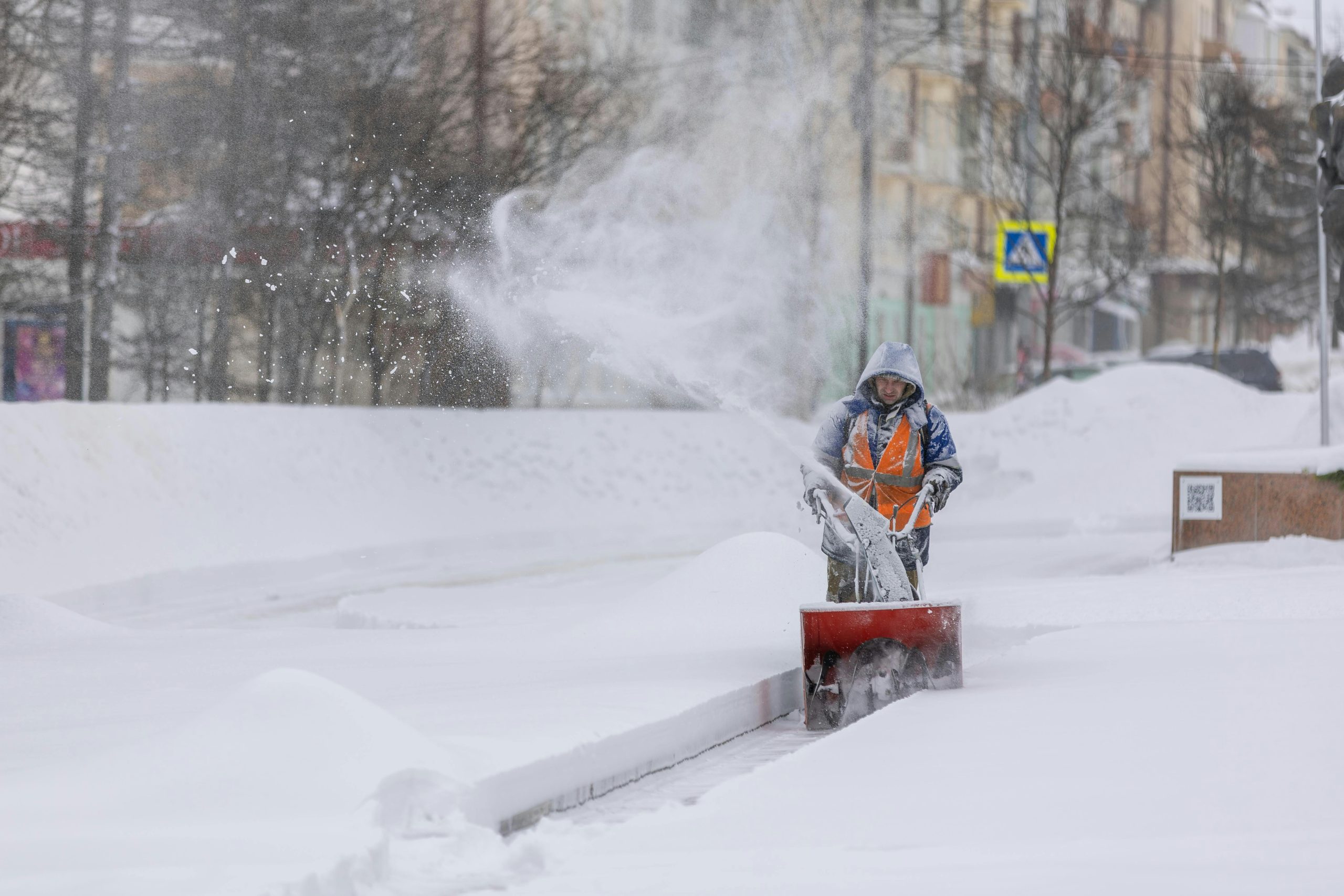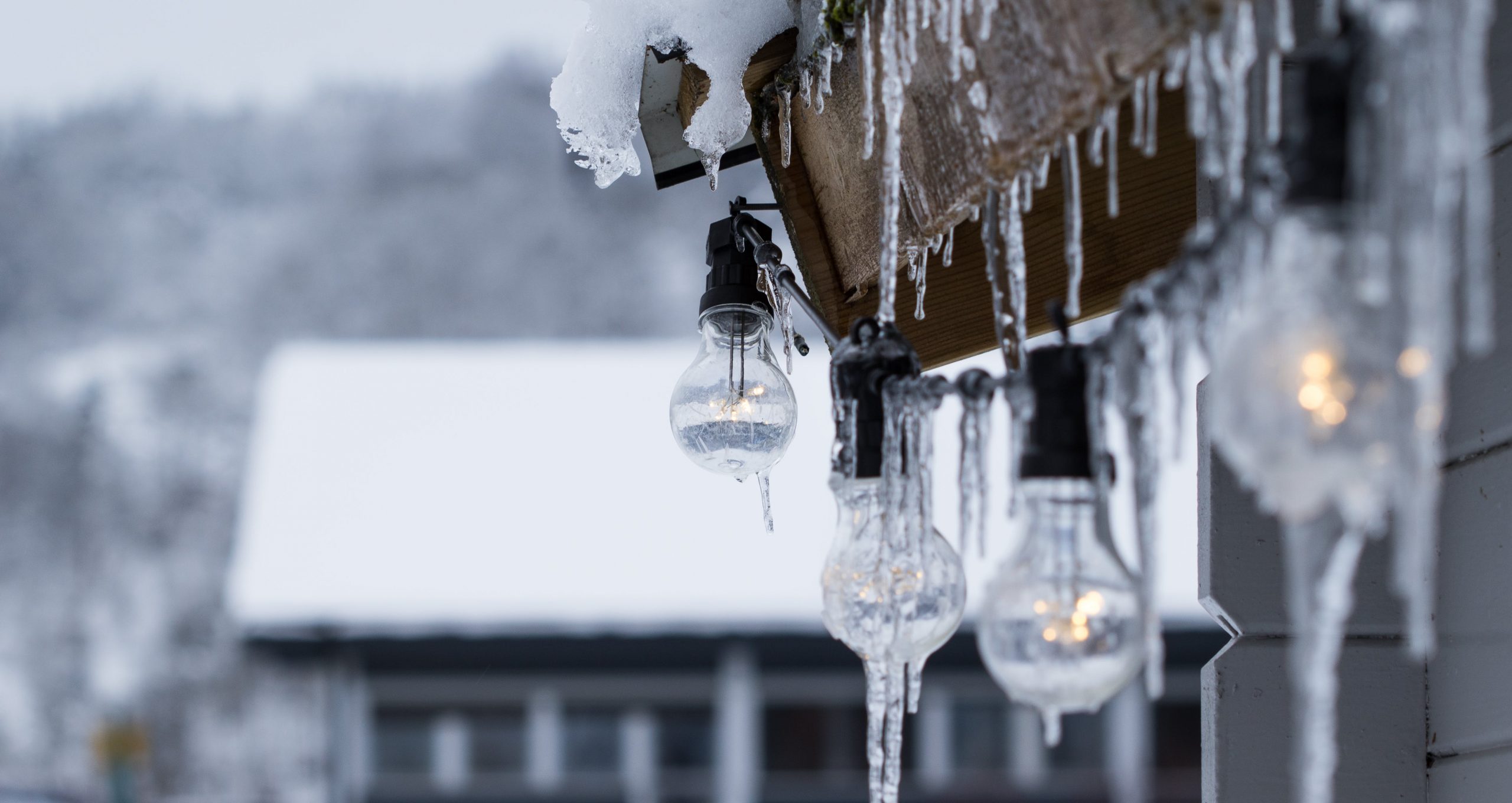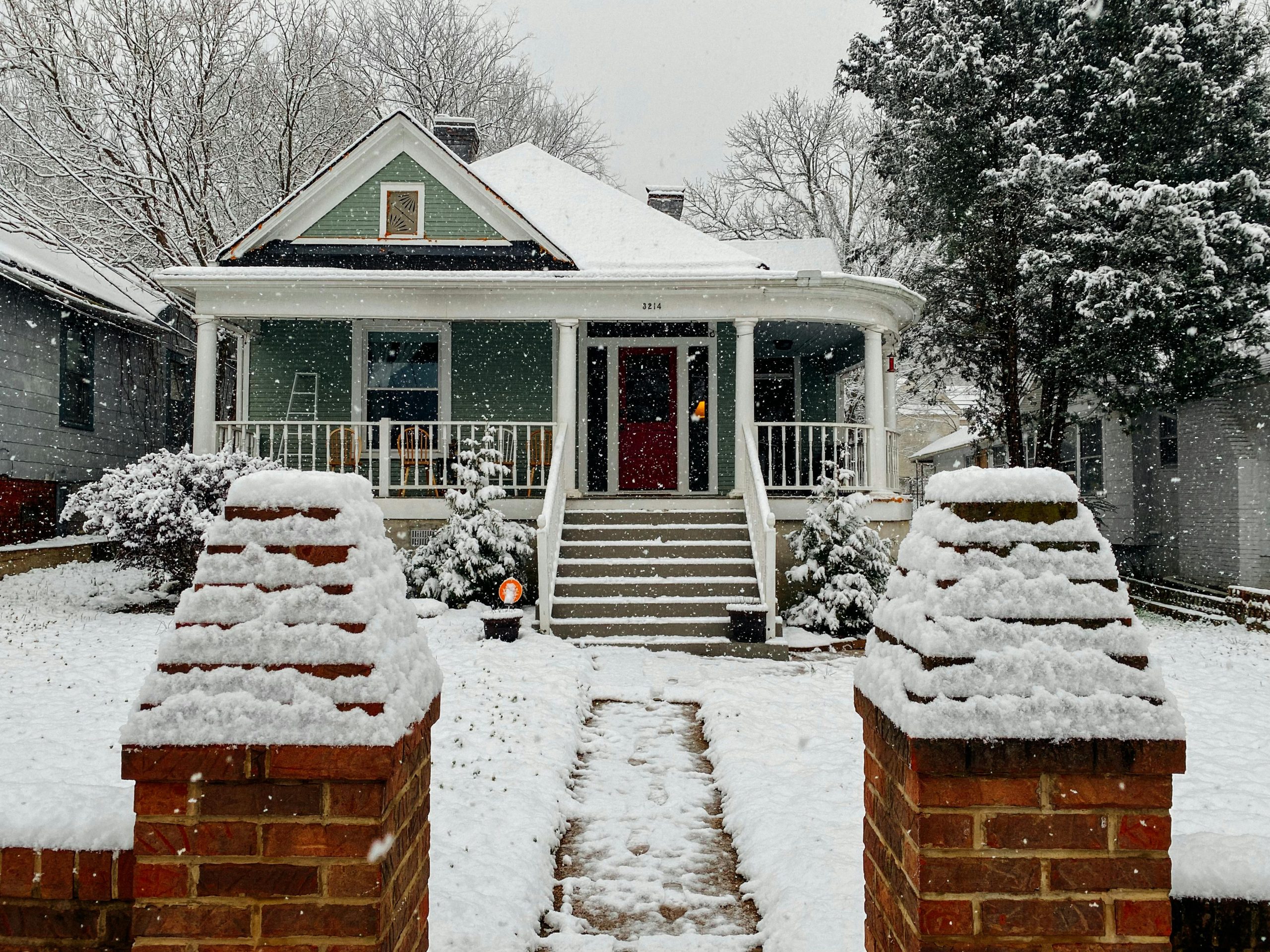Winter Maintenance Tips for Landlords: Protecting Your Rental Property in Cold Weather

Winter in Ontario can be harsh, and as a landlord, it’s your responsibility to ensure your rental property is well-maintained and protected from the elements. Preventative maintenance can help you avoid costly repairs, keep tenants safe and comfortable, and comply with local housing regulations. Here are some essential winter maintenance tips for landlords.
1. Inspect and Service the Heating System
A properly functioning heating system is crucial for tenant comfort and safety. Schedule a professional HVAC inspection to ensure furnaces or boilers are in good working condition. Change filters regularly and remind tenants to keep vents unobstructed to maintain efficiency.
2. Prevent Frozen Pipes
Frozen pipes can lead to expensive repairs and water damage. To prevent freezing:
- Insulate exposed pipes in basements, attics, and exterior walls.
- Advise tenants to keep the heat on, even if they are away.
- Encourage tenants to let faucets drip slightly during extreme cold snaps to prevent freezing.
- Ensure outdoor hoses are disconnected and shut off exterior water valves.
3. Ensure Proper Insulation and Sealing
Drafty windows and doors can drive up heating costs and make the property uncomfortable. Inspect windows, doors, and any gaps where heat can escape. Use weather stripping, caulking, or thermal curtains to improve insulation. If necessary, consider upgrading to energy-efficient windows.
4. Clear Snow and Ice Promptly
Under Ontario’s Residential Tenancies Act, landlords are responsible for ensuring safe access to rental properties. This means keeping driveways, walkways, and entryways clear of snow and ice. If you handle snow removal yourself, establish a routine for clearing high-traffic areas. If tenants are responsible, ensure they have the necessary tools and know their obligations.
5. Check the Roof and Gutters
Heavy snow accumulation and ice dams can damage roofs and gutters. Before winter sets in:
- Inspect the roof for loose shingles or damage.
- Clean out gutters to prevent ice buildup and water damage.
- Install heating cables if necessary to reduce ice dams.
6. Test Smoke and Carbon Monoxide Detectors
With increased heating use and the potential for carbon monoxide leaks, winter is a critical time to test smoke and CO detectors. Replace batteries as needed and ensure all detectors are functioning properly to comply with fire safety regulations.
7. Communicate with Tenants
Keeping open communication with tenants is key to proactively addressing winter maintenance issues. Provide them with a checklist of best practices, such as:
- Reporting any heating issues immediately.
- Keeping sidewalks salted to prevent slips.
- Checking for leaks or signs of mould caused by condensation.
8. Have an Emergency Plan
Unexpected winter emergencies, such as furnace breakdowns or major snowstorms, can happen. Have a plan in place, including:
- A list of reliable contractors for urgent repairs.
- A backup heat source in case of heating failures.
- A method for tenants to reach you in emergencies.
By staying ahead of winter maintenance, landlords can protect their investment, keep tenants happy, and minimize unexpected expenses. A well-maintained property not only prevents costly damage but also enhances tenant satisfaction and retention.
Creating a Cozy Winter Aesthetic for Your Home

As temperatures drop and snow blankets the landscape, there’s nothing more inviting than a warm and cozy home. Transforming your interior into a winter haven doesn’t require a complete overhaul—a few thoughtful touches can make all the difference. Here’s how to create a snug and stylish winter aesthetic for your home.
1. Layer with Textiles
Winter is all about layering, and your home is no exception. Introduce soft, plush textures like chunky knit blankets, faux fur throws, and velvet cushions. Opt for rich, warm tones such as deep reds, forest greens, and golden yellows to evoke a sense of warmth and comfort. Don’t forget to layer area rugs, especially in living spaces and bedrooms, to add extra coziness underfoot.
2. Add Ambient Lighting
Lighting sets the mood in any space, and in winter, ambient lighting is key. Use table lamps, floor lamps, and wall sconces with warm-toned bulbs to create a soft, inviting glow. Candles are another great option for adding warmth and intimacy—consider scented ones with winter-inspired fragrances like cinnamon, pine, or vanilla.
3. Incorporate Natural Elements
Bring the beauty of the season indoors by incorporating natural elements. Pinecones, branches, and evergreen boughs can be arranged in vases or on mantels for a rustic touch. Wood accents, such as a wooden coffee table or decorative bowls, add an earthy warmth that complements a winter theme.
4. Create a Fireplace Focal Point
If you have a fireplace, make it the star of your winter interior. Arrange comfortable seating around it and add a basket of firewood nearby for practicality and charm. If you don’t have a traditional fireplace, consider an electric or faux version to mimic the cozy ambiance.
5. Embrace Seasonal Decor
Swap out your everyday decor for pieces that reflect the winter season. Think snowflake motifs, plaid patterns, and winter-themed art prints. Keep it simple and elegant to avoid overwhelming your space.
6. Warm Up with Scents
Scents can transform the atmosphere of a room. Use essential oil diffusers, candles, or simmer pots to fill your home with comforting aromas like spiced apple, cedarwood, or gingerbread. These scents not only evoke winter but also create a sense of nostalgia and relaxation.
7. Focus on Comfort
Winter is the perfect time to embrace comfort in every corner of your home. Stock up on soft slippers, oversized mugs for hot cocoa, and extra pillows for lounging. Consider adding a reading nook with a cozy chair and blanket to create a personal retreat.
8. Keep It Tidy
A clutter-free space feels more serene and inviting. Store away unnecessary items and use decorative baskets or storage ottomans to keep blankets and other essentials neatly tucked away when not in use.
By incorporating these elements, you can turn your home into a cozy winter retreat that you’ll love spending time in. Whether you’re entertaining guests or enjoying a quiet evening by the fire, your winter interior aesthetic will set the perfect stage for comfort and joy all season long.
Winter Energy-Saving Tips for Your Home

As the temperature drops and snow blankets the ground, winter often brings higher energy bills along with its seasonal charm. Keeping your home warm and cozy doesn’t have to cost a fortune. By making a few adjustments and adopting energy-efficient habits, you can save money and reduce your environmental impact. Here are some practical winter energy-saving tips to keep your home comfortable and your wallet happy.
1. Seal Drafts and Leaks
Cold air seeping through gaps and cracks can significantly impact your home’s heating efficiency. Inspect windows, doors, and other potential entry points for drafts. Use weatherstripping or caulking to seal gaps, and consider adding door sweeps to keep cold air out. For older windows, applying plastic window film can provide an extra layer of insulation.
2. Upgrade Your Insulation
Proper insulation is key to maintaining a warm home in the winter. Check your attic, walls, and basement for sufficient insulation levels. If needed, add more to prevent heat from escaping. Insulating your pipes can also help prevent freezing and improve your home’s energy efficiency.
3. Use a Programmable Thermostat
A programmable or smart thermostat allows you to adjust your home’s temperature based on your schedule. Lowering the temperature by a few degrees while you’re sleeping or away from home can result in significant savings without sacrificing comfort.
4. Let the Sunlight In
Take advantage of free solar heat by opening curtains and blinds on south-facing windows during the day. The sun’s rays can naturally warm your home. Close the curtains at night to provide an extra layer of insulation against the cold.
5. Maintain Your Heating System
Regular maintenance of your heating system ensures it runs efficiently. Replace furnace filters every 1-3 months and schedule an annual professional tune-up. A well-maintained system uses less energy and provides better heating.
6. Use Ceiling Fans Wisely
Ceiling fans aren’t just for summer! Set your fan to rotate clockwise at a low speed during winter. This helps push warm air, which naturally rises, back down into the living space.
7. Lower Your Water Heater Temperature
Many water heaters are set at 60°C (140°F) by default, but lowering it to 49°C (120°F) can save energy and reduce the risk of scalding. Insulating your water heater tank and pipes can also help retain heat.
8. Dress for the Season
Sometimes the simplest solutions are the most effective. Layer up with cozy sweaters and blankets, and use area rugs to add warmth to cold floors. These small adjustments can help you feel comfortable without cranking up the thermostat.
9. Switch to Energy-Efficient Lighting
With shorter daylight hours, lights tend to stay on longer in winter. Replace incandescent bulbs with energy-efficient LEDs, which use less energy and last longer.
10. Unplug Unused Electronics
Even when turned off, electronics and appliances can draw small amounts of power. Unplug chargers, entertainment systems, and other devices when not in use to save energy.
Bonus Tip: Consider Energy-Efficient Upgrades
If it’s within your budget, consider upgrading to energy-efficient windows, doors, and appliances. These investments can lower your energy bills in the long run and may qualify for government rebates or incentives. If you’re a HydroOne customer you may be eligible for an energy savings program or rebate. Check out their residential incentive programs here.
The Ontario government has launched new energy efficiency programs, including the new Home Renovation Savings Program, to help families and businesses save money. The programs are part of a new $10.9 billion, 12-year investment in energy efficiency, the largest in Canadian history. Check out the details here.
By implementing these tips, you can stay warm and save money this winter while reducing your energy consumption. Not only will your efforts benefit your household budget, but they’ll also contribute to a more sustainable future. Stay cozy and energy-conscious this winter!
Peterborough Real Estate Market: 2024 Year in Review

As we close the books on 2024, it’s time to reflect on the key trends and insights that shaped the real estate market in Peterborough and the surrounding areas. From shifting buyer activity to changes in inventory, this year has been dynamic, providing valuable lessons for buyers, sellers, and real estate professionals alike.
Increased Showing Activity
One of the standout trends of 2024 was the uptick in showing activity across the Peterborough region. The number of showings before a sale increased significantly compared to previous years. This trend highlights a more deliberate approach from buyers, who are taking their time to explore options before making offers.
Market Performance: City of Peterborough
The City of Peterborough experienced steady market activity throughout 2024. Key metrics include:
- Listings: The number of new listings remained consistent with previous years, providing buyers with a range of options.
- Sales: While sales volume saw slight fluctuations, overall demand remained strong, with many properties receiving multiple offers.
- Inventory: Inventory levels tightened in the latter half of the year, creating a more competitive environment for buyers.
Market Performance: Peterborough County
In Peterborough County, the market showcased similar patterns:
- Rural Appeal: Buyers continued to show interest in rural properties, particularly those offering larger lots and proximity to natural amenities.
- Inventory and Sales: The balance between inventory and sales remained stable, with a healthy list-to-sale ratio indicating a balanced market.
Rental Market Trends
Rental rates in the Peterborough region also saw changes in 2024. The demand for rental properties increased, driven by a combination of new residents moving to the area and buyers delaying purchases due to interest rates. This shift underscores the importance of the rental market in providing housing solutions.
Looking Ahead to 2025
Market predictions for 2025 suggest that Canada’s real estate landscape will continue to face a mix of challenges and opportunities. Nationally, experts forecast a gradual cooling of interest rate hikes, which could re-energize buyer activity. Additionally, inventory levels are expected to remain tight, keeping competition strong in desirable neighbourhoods. Economic stability and evolving buyer preferences, such as increased interest in energy-efficient homes, will likely shape market trends.
The Peterborough real estate market is poised for continued activity. We anticipate steady demand driven by its affordability compared to larger urban centres. Factors to watch include interest rate trends, inventory levels, and buyer preferences. Staying informed about these developments will be key for anyone navigating the market in the coming year.
For more detailed insights or personalized advice, don’t hesitate to reach out to Century 21 United Realty at 705-743-4444. Our team is here to guide you through every step of your real estate journey.
Real Estate Market Analysis for December 2024

As we welcome a new year, let’s take a moment to reflect on the December 2024 real estate market trends in Peterborough, Ontario. Understanding these statistics can provide valuable insights for both buyers and sellers as they plan their next moves in 2025.
December 2024 Snapshot
- Average Number of Sales: 48 (down 9.4% from December 2023)
- Average Sale Price: $595,602 (up 6.2% from December 2023)
- Number of Active Listings: 145 (up from 126 in December 2023)
- Average Days on Market: 35
What Do These Numbers Tell Us?
Sales Activity
The average number of sales decreased year-over-year by 9.4%, dropping from 53 in December 2023 to 48 in December 2024. This decline suggests a slightly cooler market, which could be attributed to rising interest rates, seasonal trends, or buyer hesitation as prices increase.
Average Sale Price
On the other hand, the average sale price saw a healthy increase of 6.2%, rising from $560,699 in December 2023 to $595,602 in December 2024. This upward trend highlights strong demand for housing, even as the number of transactions slowed. Sellers can take this as a positive sign that their properties are likely to fetch higher prices.
Active Listings
The number of active listings increased from 126 to 145, providing buyers with more options compared to the same period last year. However, with properties spending an average of 35 days on the market, competition among sellers remains steady, and pricing strategies will be critical for success.
Key Takeaways for Buyers
If you’re in the market to buy a home, the increased inventory might give you more opportunities to find a property that suits your needs. However, the rise in average sale prices indicates that affordability could be a concern. Partnering with an experienced real estate agent can help you navigate the market and identify the best deals.
Key Takeaways for Sellers
For sellers, the increase in average sale prices is an encouraging trend. However, with homes taking an average of 35 days to sell, it’s essential to price your property competitively and ensure it stands out. Investing in small improvements and staging could make all the difference.
Need Expert Advice?
If you’re curious about how these stats impact your specific real estate goals, contact us at Century 21 United Realty. Our team is here to help you make informed decisions in Peterborough and the Kawartha’s dynamic market. We always have an agent on duty to help. Call our office at 705-743-4444 and we will be happy to direct you to a REALTOR® to answer your questions.
*All data from CLAR/TRREB 2024 & InfoSparks®© 2023 MLS® Resale Residential. Information deemed reliable but is not guaranteed.
Highlighted below are some of the major areas we cover with our stats:
Last-Minute Christmas Gift Ideas That Shine

The holiday season can sneak up on even the most organized among us, leaving some scrambling for the perfect last-minute gift. If you find yourself in this situation, don’t worry—there are plenty of thoughtful and creative options to save the day.
1. Gift Cards with a Twist
Gift cards might seem impersonal, but they can be tailored to your recipient’s tastes. Pair a coffee shop gift card with a festive mug or a movie theatre card with popcorn and treats for a cozy night in.
2. Subscription Services
Give the gift that keeps on giving! Options like streaming services, audiobook memberships, or monthly subscription boxes (think coffee, wine, or snacks) make excellent last-minute choices that feel well-thought-out.
3. DIY Gift Baskets
Put together a themed gift basket. A spa basket could include bath bombs, candles, and lotions, while a foodie basket might feature gourmet chocolates, olive oil, and a bottle of wine.
4. E-Gifts
Digital gifts like online courses, virtual workout memberships, or even a donation in their name to a meaningful charity can be sent instantly and are perfect for anyone on your list.
5. Personalized Printables
If you’re crafty, create a personalized coupon book with promises like “movie night on me” or “homemade dinner of your choice.” These thoughtful gestures show you care without requiring much lead time.
6. Local Finds
Support small businesses in your area by picking up unique, handcrafted items like candles, ornaments, or artisanal foods. Bonus: No waiting for shipping!
7. Plants or Flowers
A beautiful potted plant or a festive floral arrangement is a timeless gift that can brighten anyone’s day. Add a holiday touch with a red ribbon or seasonal greenery.
8. Baked Goods or Homemade Treats
Whip up a batch of cookies, fudge, or other holiday treats. Package them in a decorative tin or box for an extra-special touch.
9. Books or Puzzles
A good book or a fun puzzle is a classic gift that works for almost everyone. Check your local bookstore for recommendations or pick something seasonal to match the holiday vibe.
10. Last-Minute Luxe
For something a little extra special, consider a small piece of jewellery, a luxury candle, or high-end skincare products. These items are easy to find at department stores and make an elegant impression.
Shop Local in Downtown Peterborough
If you’re in Peterborough, why not explore some of the fantastic independent retailers in our downtown? From handcrafted gifts to unique décor, our local shops are filled with treasures that make meaningful presents. Visit stores like Watson & Lou for creative and artisan-made items, or check out Living Local Marketplace for locally sourced goodies. You’ll not only find distinctive gifts but also support our vibrant community of small businesses. Many shops offer gift wrapping, making your last-minute shopping even easier!
Wrap It Up!
Whatever you choose, presentation matters. Use festive wrapping paper, ribbons, or a gift bag to add a touch of holiday magic.
Even with time running out, a thoughtful gift can bring joy and show how much you care. With these ideas, you’ll be ready to spread cheer and make this holiday season memorable for your loved ones.
Fun and Easy Christmas Crafts to Brighten Your Holiday Season

The holiday season is the perfect time to gather your family and friends for some festive crafting! Whether you’re looking to decorate your home, create personalized gifts, or simply spend quality time together, these fun and easy Christmas crafts are sure to bring joy and creativity to your celebrations. Here are some ideas to get you started:
1. DIY Ornament Decorating
Transform plain ornaments into stunning decorations with a few simple supplies. Grab some clear plastic or glass ornaments, and fill them with:
- Glitter
- Fake snow
- Miniature holiday figurines
- Colourful beads
You can also use paint pens to add designs, names, or festive messages. These ornaments make lovely keepsakes or thoughtful gifts.
2. Popsicle Stick Snowflakes
This classic craft is great for kids and adults alike. You’ll need popsicle sticks, glue, and paint. Arrange the sticks in snowflake patterns, glue them together, and paint them in your favourite holiday colours. Add glitter for extra sparkle and hang them on your tree or in windows.
3. Pinecone Christmas Trees
Bring the beauty of nature indoors with pinecone Christmas trees. Collect pinecones and paint them green, then add small beads or pom-poms as ornaments. Top them with a star cutout and place them on your mantel or table for a rustic holiday touch.
4. Mason Jar Snow Globes
Create charming snow globes with mason jars, water, and glitter. Glue a small holiday figurine or miniature tree to the inside of the jar lid, fill the jar with water and glitter, and screw the lid on tightly. Shake it up for a magical snow effect!
5. Handprint Reindeer Art
Capture memories with this adorable keepsake. Trace your child’s hand on brown construction paper and cut it out. The handprint becomes the reindeer’s face, and the fingers are its antlers. Add googly eyes, a red pom-pom for the nose, and decorate as desired. This is a perfect activity for little ones.
6. Festive Garland
String together colourful paper shapes, dried orange slices, or popcorn and cranberries to create a festive garland. Drape it over your fireplace, staircase, or Christmas tree for a cozy, handmade look.
7. Salt Dough Ornaments
Mix up a batch of salt dough with 2 cups of flour, 1 cup of salt, and 1 cup of water. Roll it out, cut shapes with cookie cutters, and bake them at a low temperature until hard. Once cooled, paint and decorate your ornaments, then add a ribbon to hang them.
8. Holiday Card Collage
Recycle old holiday cards by cutting out festive images and arranging them into a collage. Frame your creation for a unique piece of holiday art or use it to make new cards for friends and family.
9. Paper Snowflakes
A timeless favourite, paper snowflakes are simple yet beautiful. Fold a piece of paper into a triangle, snip out small shapes along the edges, and unfold to reveal your intricate design. Hang them in windows or use them as gift toppers.
Tips for Crafting Success
- Prepare Your Space: Cover your table with newspaper or a plastic sheet to make cleanup easier.
- Use Safe Materials: Opt for non-toxic glue and paints, especially when crafting with kids.
- Get Creative: Don’t be afraid to add your own twist to these ideas. Use what you have at home to make your crafts unique.
Crafting during the holidays is not just about creating decorations; it’s about making memories. So, gather your loved ones, play some Christmas music, and enjoy the magic of the season together. Happy crafting!
The History of Peterborough, Ontario

Nestled in the heart of Ontario, Peterborough boasts a rich history that intertwines with Canada’s journey as a nation. From its Indigenous roots to its modern-day charm, Peterborough has evolved into a vibrant community that celebrates its past while looking towards the future. Let’s dive into the captivating history of this remarkable city.
Indigenous Beginnings
Long before European settlers arrived, the land we now call Peterborough was home to the Michi Saagiig Anishinaabeg people. The region’s rivers and lakes served as vital transportation routes, connecting communities and supporting trade. Indigenous peoples lived harmoniously with the land, relying on its resources for sustenance and cultural practices. Their deep connection to the area remains an integral part of Peterborough’s identity today.
The Arrival of European Settlers
In the early 19th century, European settlers began to establish themselves in the region. Peter Robinson, a prominent politician, organized the migration of nearly 2,000 Irish immigrants to the area in 1825. This influx of settlers led to the creation of a thriving agricultural community. The town’s name honours Robinson’s contributions, with “Peter” serving as a nod to his first name.
The Lift Lock: A Marvel of Engineering
No discussion of Peterborough’s history would be complete without mentioning the Peterborough Lift Lock. Opened in 1904, this engineering marvel remains one of the tallest hydraulic lift locks in the world. Part of the Trent-Severn Waterway, it stands as a testament to the ingenuity and determination of the era. Today, the Lift Lock is both a functional piece of infrastructure and a beloved tourist attraction.
Industrial Growth and Cultural Flourishing
The 19th and 20th centuries saw Peterborough transform into an industrial hub. Companies like Canadian General Electric and Quaker Oats established roots in the city, providing jobs and fostering economic growth. Alongside its industrial development, Peterborough became a cultural hotspot, with institutions like Trent University and the Canadian Canoe Museum enriching the community’s intellectual and artistic life.
Modern-Day Peterborough
Today, Peterborough is a dynamic city that blends historical charm with modern innovation. The downtown core buzzes with unique shops, restaurants, and cultural events, while the surrounding natural beauty attracts outdoor enthusiasts year-round. As a gateway to the Kawarthas, Peterborough continues to be a destination for those seeking both relaxation and adventure.
Preserving the Past
Peterborough takes great pride in preserving its heritage. Landmarks like Hutchison House Museum and the Centennial Fountain serve as reminders of the city’s storied past. Efforts to honour the contributions of Indigenous peoples, such as the installation of commemorative plaques and educational initiatives, highlight the city’s commitment to reconciliation.
A City with Heart
Peterborough’s history is more than just dates and events—it’s a story of resilience, community, and progress. From its humble beginnings to its status as a thriving urban centre, Peterborough embodies the spirit of growth and adaptation. Whether you’re a resident or a visitor, the city’s rich history is sure to inspire and captivate.
The next time you stroll along the Otonabee River or marvel at the Lift Lock, take a moment to reflect on the layers of history that make Peterborough the extraordinary place it is today. Thinking of making a move to this beautiful city? We always have an agent on duty. Give us a call at 705-743-4444 and we will be happy to connect you!

 Facebook
Facebook
 X
X
 Pinterest
Pinterest
 Copy Link
Copy Link
















